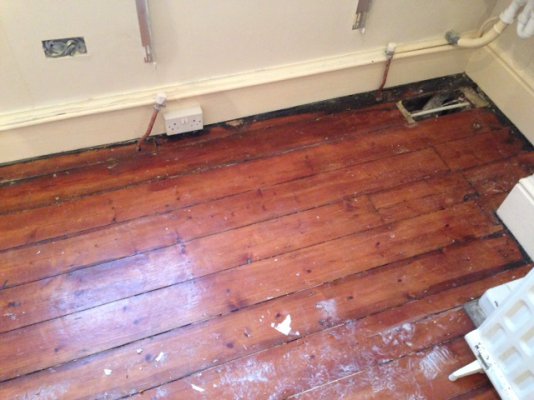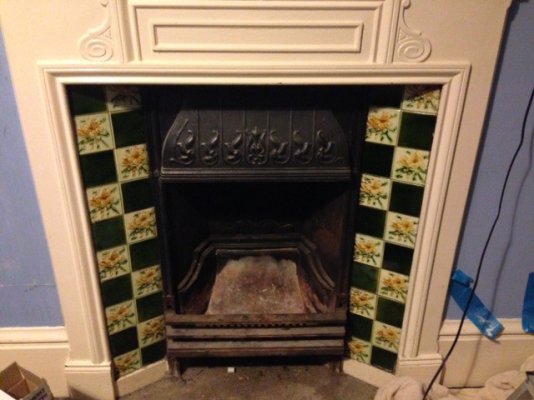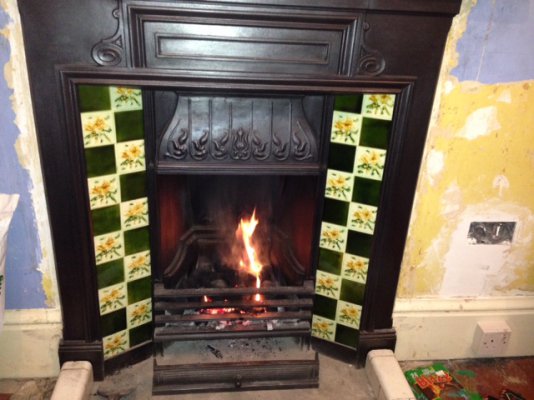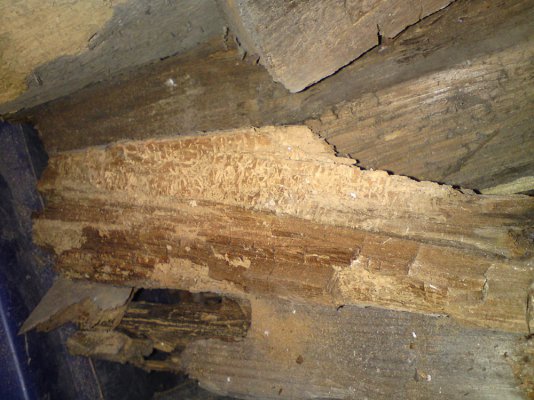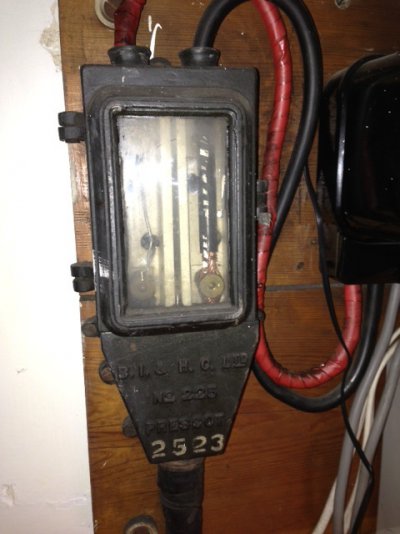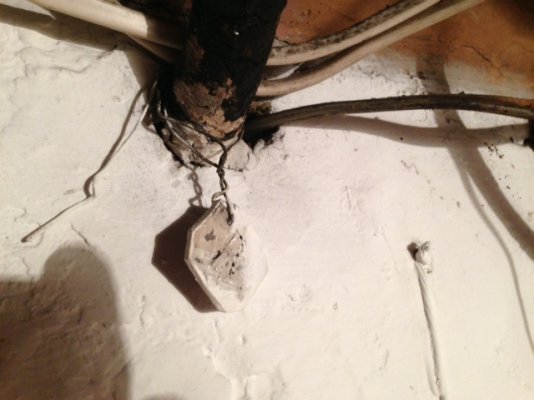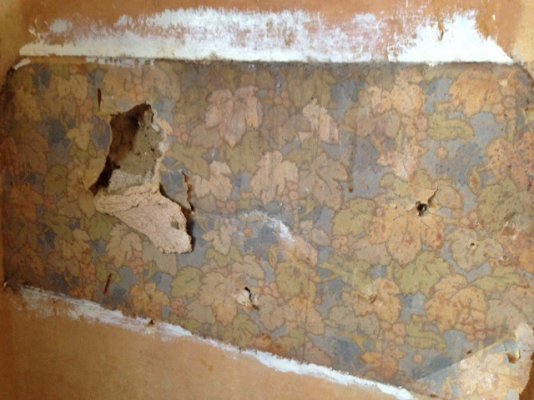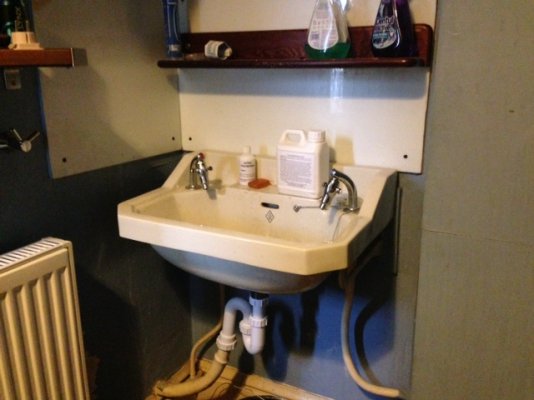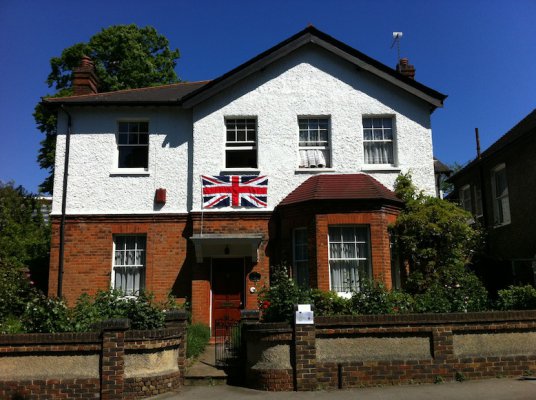Hello Everyone.
This is my first post on the forum so I would like to introduce myself. My name is Stephen, I am a doctor and I live in a large, detached, Edwardian (1902) house in Croydon, Surrey, UK. The house is in a Conservation Area and has a local listing (not a national listing).
I grew up in the house and have lived here for 34 years. I am now embarking on a programme of limited "modernisation" as very little has been done to the house (this is a good thing) over the years apart from maintenance. The works primarily consist of re-wiring to provide adequate power outlets (a single socket in a room is rather restrictive) and upgrades to the central heating system. Over the years there have been additions to the central heating but for some reason the house was never completely centrally heated and acquired 2 different diameters of microbore as well as more standard bore piping. As part of this programme, rooms are stripped for complete redecoration. The sash windows are also being renovated in turn with new sash cords, weights balanced, draftproofing and replacing cracked panes of glass (with reclaimed old wavy glass).
It has been an "interesting" project so far with, I am sure to the old-hands, the all too familiar additional expenses, delays and surprises along the way. It was a surprise to find that the old gas light fittings, which had been capped off on the wall, are all still connected to the gas supply.
Anyway, I digress and I should get to the point. This question concerns what to do with old floorboards. I am aware that this has been asked before and I have searched the forum and read the old threads.
Many years ago, in about 1988 when I was 16. I hired a sanding machine and sanded down the Scots Pine floorboards in my bedroom. I then stained the boards with a mixture of stains to achieve a mahogany colour and applied a two-part polyurethane varnish made by Clarke. Of course it sounds like total overkill to use a varnish that was intended for ballroom floors in a bedroom but this was what was available in the hire shop at the time and I did not know any better. 24 years later, the finish is looking tired and there has been damage in various places so I need to address this.
I have read the various opinions on whether to stain or not to stain. It seems that most people suggest not to stain and a "natural" finish is advocated.
At this point I may be being rather contentious. My view is that unstained pine floorboards are absolutely wrong in a period house. From the books I have read it is suggested that the Victorians and Edwardians would not dream of exposing nasty inferior pine and where there was pine it was either painted, painted with woodgrain effects or stained and varnished/waxed. In all the rooms in my house, the boards had been stained a very dark colour where they would have been exposed around rugs. The 1970's fashion for stripping pine seems to have been extended to floorboards! I suppose this stripping fad was a reaction to the overuse of "Brilliant White" gloss paint which in itself is wrong because brilliant white was not invented until after WW2. I hate brilliant white gloss but if the surface was originally painted I keep it that way.
Now my work on my floorboards years ago was obviously not right because I used polyurethane varnish. The major problems with polyurethane are that it was not synthesised until 1937 and it is difficult to patch repair which could mean sanding the whole floor down again. Re-sanding is a lot of work but more importantly it is a damaging process and cannot be done over and over. Reclaimed boards are expensive enough already! My bedroom floor lasted 24 years but this time I will probably use a hard wax oil product (e.g. Fiddes Hard wax oil). Despite all this attention to detail, only a small area of the floorboards will ever be exposed because rugs are used as they would have been originally.
Sorry for all that rambling on........What do people think about staining boards?
Best Wishes,
Stephen
This is my first post on the forum so I would like to introduce myself. My name is Stephen, I am a doctor and I live in a large, detached, Edwardian (1902) house in Croydon, Surrey, UK. The house is in a Conservation Area and has a local listing (not a national listing).
I grew up in the house and have lived here for 34 years. I am now embarking on a programme of limited "modernisation" as very little has been done to the house (this is a good thing) over the years apart from maintenance. The works primarily consist of re-wiring to provide adequate power outlets (a single socket in a room is rather restrictive) and upgrades to the central heating system. Over the years there have been additions to the central heating but for some reason the house was never completely centrally heated and acquired 2 different diameters of microbore as well as more standard bore piping. As part of this programme, rooms are stripped for complete redecoration. The sash windows are also being renovated in turn with new sash cords, weights balanced, draftproofing and replacing cracked panes of glass (with reclaimed old wavy glass).
It has been an "interesting" project so far with, I am sure to the old-hands, the all too familiar additional expenses, delays and surprises along the way. It was a surprise to find that the old gas light fittings, which had been capped off on the wall, are all still connected to the gas supply.
Anyway, I digress and I should get to the point. This question concerns what to do with old floorboards. I am aware that this has been asked before and I have searched the forum and read the old threads.
Many years ago, in about 1988 when I was 16. I hired a sanding machine and sanded down the Scots Pine floorboards in my bedroom. I then stained the boards with a mixture of stains to achieve a mahogany colour and applied a two-part polyurethane varnish made by Clarke. Of course it sounds like total overkill to use a varnish that was intended for ballroom floors in a bedroom but this was what was available in the hire shop at the time and I did not know any better. 24 years later, the finish is looking tired and there has been damage in various places so I need to address this.
I have read the various opinions on whether to stain or not to stain. It seems that most people suggest not to stain and a "natural" finish is advocated.
At this point I may be being rather contentious. My view is that unstained pine floorboards are absolutely wrong in a period house. From the books I have read it is suggested that the Victorians and Edwardians would not dream of exposing nasty inferior pine and where there was pine it was either painted, painted with woodgrain effects or stained and varnished/waxed. In all the rooms in my house, the boards had been stained a very dark colour where they would have been exposed around rugs. The 1970's fashion for stripping pine seems to have been extended to floorboards! I suppose this stripping fad was a reaction to the overuse of "Brilliant White" gloss paint which in itself is wrong because brilliant white was not invented until after WW2. I hate brilliant white gloss but if the surface was originally painted I keep it that way.
Now my work on my floorboards years ago was obviously not right because I used polyurethane varnish. The major problems with polyurethane are that it was not synthesised until 1937 and it is difficult to patch repair which could mean sanding the whole floor down again. Re-sanding is a lot of work but more importantly it is a damaging process and cannot be done over and over. Reclaimed boards are expensive enough already! My bedroom floor lasted 24 years but this time I will probably use a hard wax oil product (e.g. Fiddes Hard wax oil). Despite all this attention to detail, only a small area of the floorboards will ever be exposed because rugs are used as they would have been originally.
Sorry for all that rambling on........What do people think about staining boards?
Best Wishes,
Stephen




